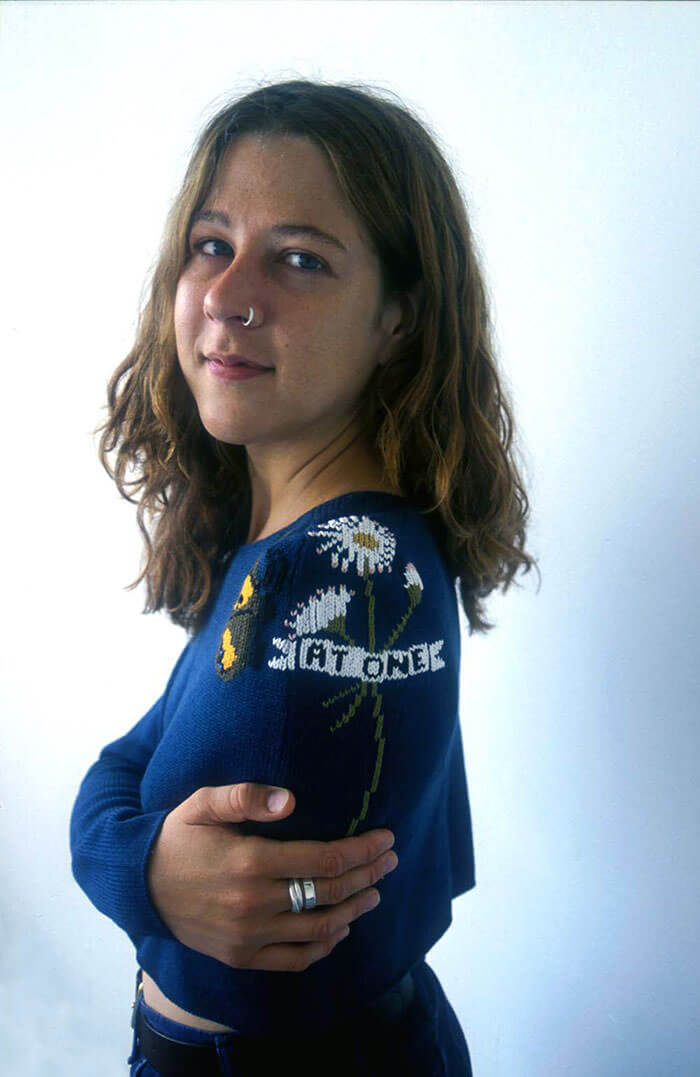Video: Márta Csige
For_Every_Body: The road to the Normcore Exhibition
I first encountered the piece of clothing shown on the right in the book titled Design Meets Disability (The MIT Press, 2009). This simple knitted sweater represented a fresh and innovative visual appearance and a factual statement which I might have seen before, but not in such a light-hearted and expressive way. The sweater worn by Catherine Long is appropriate to the body that wears it and it fulfils its purpose in every way. The social, individual-emotional and functional aspects are all thought through. The pattern draws the eyes to the part it embellishes (the shoulder of a missing left arm) which gesture is usually discouraged by everyday public opinion. Its message is not that is acceptable to stare, it says, look, this is me and I feel good in my body. The fact that this can be communicated in such a simple and comprehensible way made me realize that this way of thinking is not typical in our object culture, while it may shape the general perception more effectively than any educational lecture.
This was the aim of the course titled Fashion for Every Body held at MOME in the spring of 2016 in which six students majoring in textile design and three models (with missing limbs) worked together. Although the project started as a one-week assignment, it exceeded it both in time and energy investment. The introductory presentations, the open-mindedness and receptiveness of the models all helped the designers to be aware of the complexity of the task, to work together and find answers for the individual needs in such a short amount of time. The garments shaped by a collective discourse (which the models could keep after the project) were taken on by the students of the collaborating Media Design department in the form of a course titled Space for Every Body. The students of these two departments unfolded the question of how the project can be presented to a broader audience while taking the individual personalities and needs of the models into consideration. The material presented at this exhibition is the result of this dialogue which places accessible fashion in the realm of mainstream fashion. The work of the designers shows how to address the environment in a radical way without provocation, with humour and by rethinking fixed ideas. As soon as the affected are not addressed as subjects but as co-creators, their experience and culture can shape design the same way as design can shape lives and the social perception of the people living with disabilities. Thus, instead of the destructive attitude of evoking pity, a partnership can emerge that might just be the most optimal version of social visibility.
The common experience of the textile designer pairs (Anna Török & Csenge Vass, Bori Györök & Adrienna Nagy, Zsófi Lévai & Feri Zepkó), the models involved (Bori Ivicsics, Réka Lukoviczki, Luca Szabados) and the media design team creating the images (Marci Andristyák, Andris Bán, Kristóf Kovács, Zsófi Liter, Máté Makláry) was the added value that shaped this unconventional design process. Thanks to the great atmosphere during the photo shooting, the models could be assured that they were not only visible but also attractive to all eyes.
Dóra Dobi

Freddie Robins: At One. Model: Catherine Long.
Video: Mariann Zászlós